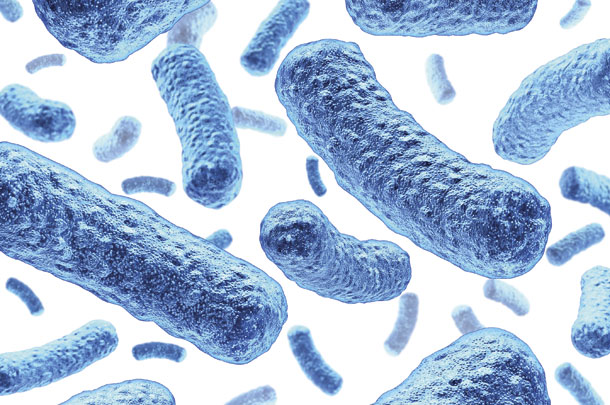Although it may not happen often, it is a welcome pleasure when it does. In today’s dairy economy, you are probably wondering how we can be talking about the best of both worlds. Let’s see if we can connect the dots.
A lactating dairy cow has one of the most unique and complex digestive systems. We often say, “We don’t feed the dairy cow; we feed the microbes in her rumen and lower digestive tract.” There are bacteria in a variety of classes (cellulolytic, proteolytic, lactate-utilizers, hydrogen-utilizers, etc.), along with protozoa, fungi, archaea, mycoplasmas and phages that all play novel roles in the rumen microbial ecosystem to aid in effective digestion, efficient absorption and critical protective functions of the digestive tract.
Just as complex is the variety of feed additives and specialty ingredients available for inclusion in diets, notwithstanding direct-fed microbials (DFM) or probiotics; we can divide DFMs into bacterial and fungal products. We can then continue to parse out differences within the bacterial class to lactic acid bacteria and Bacillus species and strains.
Lactic acid bacteria
Until recently, lactic acid bacteria (LAB) were the most commonly featured form of DFM used in ruminant diets due to an abundance of features and benefits. Lactic acid bacteria are non-motile but capable of colonizing the gut. They typically belong to the normal microbiota of the gastrointestinal tract, specifically the intestine. Unfortunately, LAB are sensitive to heat; therefore, they lose their effective properties when included in feed mash and put through a pellet mill.
Probiotic functions for LAB range from bioconversions and production of growth substrates to direct antagonism and competitive exclusion of specific pathogens to intestinal barrier function by improving secretions from goblet cells, reducing inflammation and stimulating immune function. But not all lactic acid bacteria perform all these functions all the time. Recent research has clearly demonstrated certain human and animal LAB probiotics can protect the protein junctions between intestinal epithelial cells, maintaining their integrity when presented with inflammatory cytokines, reactive oxygen species or pathogens that may lead to a “leaky gut” syndrome.
Strains like Lactobacillus animalis and Propionibacterium freudenreichii in certain combinations have been shown repeatedly to inhibit E. coli 0157:H7 and Salmonella in growing and finishing beef cattle. Furthermore, these strains have greatly reduced non-metabolic adverse health events (e.g., death, displaced abomasum, metritis, etc.) in lactating dairy cows and lead to improvements in total tract digestibility of nutrients.
Bacillus species
Bacilli are ubiquitous soil bacteria that perform a variety of functions in the natural world. If you have mud on your boots, and who doesn’t after the fall and winter we’ve experienced, you are tracking Bacilli everywhere you go.

Bacilli have been included in monogastric DFM products and diets for over 25 years with tremendous benefit to the health and productivity of swine and poultry. More than 600 trials have been completed that have resulted in more than 100 abstracts and 60 peer-reviewed papers having been published on Bacillus-based probiotics fed to monogastrics. Additionally, Bacillus-based probiotics have been fed to and researched in pre- and post-weaned calves.
The primary reason Bacillus-based DFMs have been used extensively in the monogastric industries is due to their spore-forming characteristic and ability to withstand the temperature and pressure of pelleting while remaining viable. Bacilli are motile and can move as single cells or as multi-cellular swarms or sliding sheets; however, Bacilli do not colonize the gastrointestinal tract.
Bacillus subtilis is widely available as a DFM, but an additional strain known as Bacillus licheniformis is also readily available. Certain strains including Bacillus pumilus and Bacillus amyloliquefaciens have been researched and may eventually make it to the market as well.
Strains matter
Previously, we have described extensively just how “strains matter.” Just because Company A has a Lactobacillus acidophilus organism doesn’t mean it is remotely similar in function to a Lactobacillus acidophilus offered by Company B. The same can be said about the myriad of Bacillus products on the market currently. Think about disease-causing bacteria like E. coli. There are five broad classifications of E. coli, and only some of the classifications cause disease.
There are numerous E. coli in your digestive tract right now and, unless you are currently experiencing digestive distress or a mild digestive upset, they are not the disease-causing strains. The most obvious example of a disease-causing strain is E. coli O157:H7. This strain generally occurs as some sort of food poisoning leading to digestive distress, diarrhea and possibly even death. Do bacteria strains matter? Absolutely.
Bacteria strains can differ significantly in traits such as tolerance to oxygen, salt, bile, optimal pH, and the list goes on. Furthermore, they differ in the products they produce and their primary modes of action – for instance, acids, enzymes and expression of peptides inhibitory to other micro-organisms. These and many other traits are extremely important when selecting organisms for use as probiotics.
Research
Ultimately, the value of any probiotic is the research demonstrating its efficacy across a variety of dairies under reasonably controlled conditions. The haphazard and undocumented combination of a multitude of probiotic organisms benefits no one and simply clouds our perception of the DFM space. Alternatively, when known strains with known functions in vitro on the laboratory benchtop are adequately tested in vivo in lactating dairy cows yielding repeatable beneficial outcomes, then we have something noteworthy. Therefore, it’s important to say, “Show me the data.”
Currently, there is tremendous excitement around Clostridia inhibition and mitigation in dairy cows and calves with the feeding of Bacilli-based probiotics, but it is not just about Clostridia. There is a plethora of other potential pathogens inadvertently consumed daily by dairy cows and calves that need our attention. By combining LAB and Bacilli into one probiotic to mitigate pathogens and to improve and maintain a healthy gut, we can enjoy the advantages and benefits of “the best of both worlds.” ![]()
PHOTO 1: Lactobacillus is a major part of the lactic acid bacteria group that converts sugars to lactic acid. Getty Images.
PHOTO 2: Bacillus bacteria is rod-shaped, gram-positive, aerobic and widely found in soil and water. Photo courtesy of Chr. Hansen Animal Health & Nutrition.
Kimberley Morrill is a technical service manager with Chr. Hansen Animal Health & Nutrition. David Ledgerwood is a technical service manager, silage inoculants and cattle probiotics, with Chr. Hansen Animal Health & Nutrition.

-
Keith A. Bryan
- Technical Services Manager
- Ruminant DFM & Silage Inoculants
- Chr. Hansen Animal Health & Nutrition
- Email Keith A. Bryan









